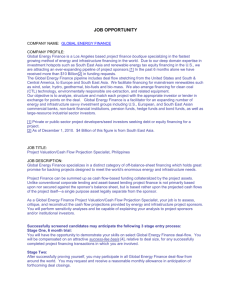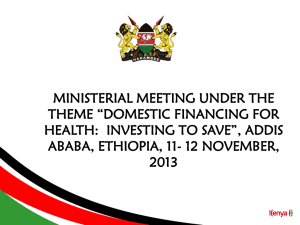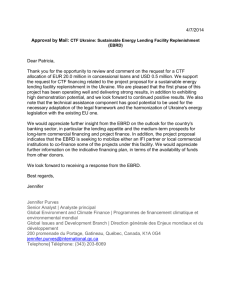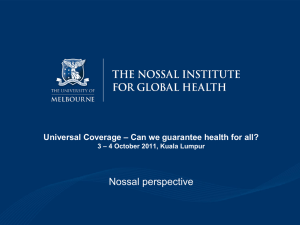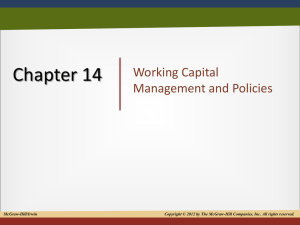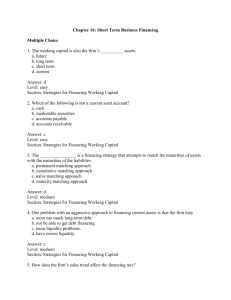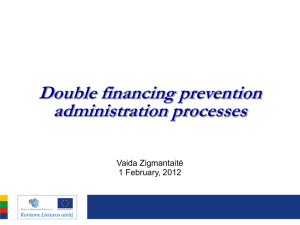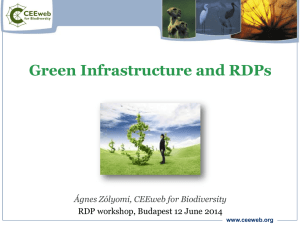Aboriginal Financial Officers Association of BC
advertisement
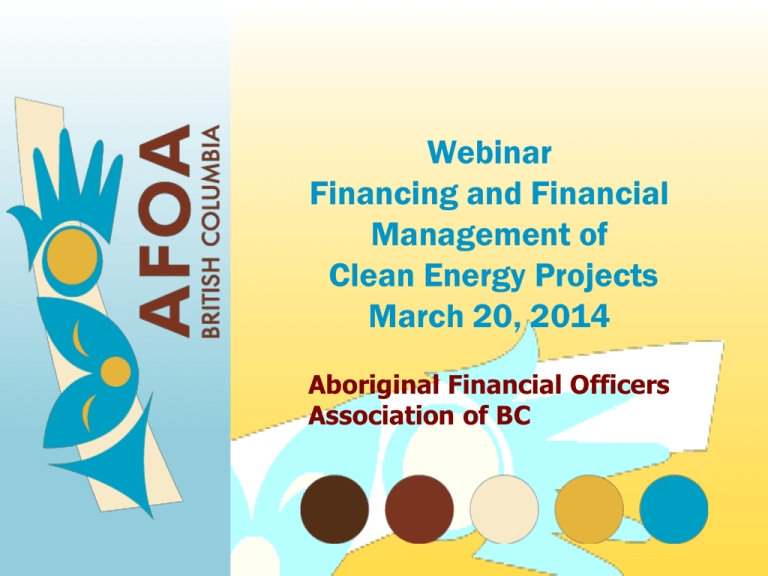
Webinar Financing and Financial Management of Clean Energy Projects March 20, 2014 Aboriginal Financial Officers Association of BC Review – February 20, 2014 1. Peter Ostergaard, Energy Coordinator in the Fraser Basin Council’s Smart Planning for Communities Program gave us an overview of how community energy planning can fit within remote community sustainable initiatives Review – February 20, 2014 2. Scott Coulson, the CAO/Director of Finance at Uchucklesaht Tribe Government described the process undertaken by their community to upgrade their community energy system through BC Hydro’s Remote Community Electrification program Review – February 20, 2014 1. Kevin Pegg, President at EA Energy Alternatives ltd. Illustrated some different designs and discussed installation and maintenance of renewable electrical power systems including integrated solar, wind and microhydro technologies. Review The February 20 Webinar PowerPoint with Webinar audio recording is available at: http://www.fraserbasin.bc.ca/resources_summaries.html Webinar Sponsors Aboriginal and Northern Development Canada Van City Credit Union BC Ministry of Energy, Mines and Natural Gas A joint initiative of: Fraser Basin Council Aboriginal Financial Officers Association of BC Today A very high level overview of the strategic and financial planning for clean energy projects: AFOABC Vice-President, Clay Harmon and consultant to First Nations Financing of Clean Energy: Stewart Anderson Vancity (Vancouver City Savings Credit Union) – is the Manager, Community Investment. Financing of Clean Energy from a First Nations perspective: Steve Berna, Chief Operating Officer of the responsible for operating the loan programs of the FNFA, Clean Energy – Two Broad Approaches Use of energy • Consumption in the community - both residential and commercial • Education a big part of this Creation of energy (I know – we don’t create it, we just modify its form) • A number of different ways as discussed last month Some alternative energy sources Heat pumps Micro Hydro (run of river) Solar Diesel generator Wind Biomass alternatives Integrated – a combination of one or more of the above The next few slides are taken from AFOABC’s 2 day workshop: Essentials of First Nations Financial Management Basics of Sound Financial Management 1. 2. 3. 4. 5. Sound financial foundation – required to meet need of members. All Band Councils are wholly responsible to all its membership for financial health. Band Council cannot legally delegate responsibility – they can assign some duties or activities. Time and energy spent on management principles of planning, organizing and controlling financial and other resources. #4 only achieved through leadership of Council and staff involvement. Characteristics of the… Strategic Plan looks to the future (20 years, 7 generations) reflects the values and vision of the community Integrates programs and resources …is general in nature Review these plans annually Business Plan Ways and means for strategic plan implementation – performance measures Sets specific scheduled goals and objectives 3-5 years duration Connected to Community Development Plan (PDP) Financial plan integral to business plan multi year Planning and Where Finances Fit In Overall Strategic Community Plan (Overall Vision) Business Plan (including PDP) “Ways and means” Financial Plans (Budgets, etc.) Evaluation Plans (Performance measures) Activities Plans The next few slides are taken from the Strategic Planning and Management module of AFOABC’s 2 day workshop: First Nations Band Management and Best Practices Historical Perspective First Nations traditional laws and structures for decision making A well-organized system of governance enabling longterm and short-term strategic decision making Short and long term decisions about: resource management, division of labour, trade and inter-relations with other Nations, seasonal movements, and generation of wealth. Key Elements of a Strategic Management Framework Strategy Development Strategy Implementation Evaluation/Monitoring Strategy Development Strategy Implementation Evaluation/ Monitoring Strategy Management Model Feedback Internal Audit Establish Vision, Mission, & Values Establish Goals & Critical Success Factors Generate & Select Strategies & Performance Measures Establish Policies, Action & Budgets Allocate Resources & Do It! Measure and Evaluate Performance External Audit Strategy Formulation Strategy Implementation Strategy Evaluation A Little More Specific to Clean Energy Environmental Scan - the “As is” situation Some questions might be: • Is the community reliant on diesel generators? • Is it a windy place? • Does the sun shine every day? • Are the streams seasonal? • etc. The Vision Brain Storm what the community would look like if a clean energy plan has been implemented – the “Should be” situation: This might include: • Reduced diesel generation as a result of an integrated energy management plan • Generation of surplus energy for sale into the grid • This is a long list and community involvement is critical Make SMART goals related to your clean energy plan, they need to be: Specific Meaningful Achievable Results focused Time based Action Agree on the action steps required to achieve the goal What activities need to happen? • Engineering study. Feasibility study, etc. Who is going to do the activities? When do they need to be done by? What resources are available? People – staff or consultants? Money? Existing physical assets? Road blocks What is going to stand in the way of the successful implementation of a clean energy plan? Can these obstacles be overcome and if so, what is the plan to overcome them? Performance Management Who is driving the process? Is there an accountability framework? Who needs to be kept informed of the process? Should community members be kept aware of what is happening in terms of timing and budget? For More Information General info on Comprehensive Community Planning: • http://www.aincinac.gc.ca/bc/proser/fna/ccp/ccp_e.html List of Funding Sources: • http://www.aincinac.gc.ca/bc/proser/fna/ccp/ccphb/res1_e.html Comprehensive Community Planning Handbook: • http://www.aincinac.gc.ca/bc/proser/fna/ccp/ccphb/ccphbindx_e.html Financing the project Typically, sources of capital for clean energy projects: • Grants: examples Funding Guide at http://www.fraserbasin.bc.ca/ccaq_rci.html • Own source revenue (where possible) • Debt or similar forms of financing Financing the project Traditional lending from banks, credit unions and other financial institutions can differ significantly from lending by First Nations lending organizations Stewart Anderson from Vancity will present options for financing from a traditional lending source Steve Berna will present financing of clean energy from the first Nations Finance Authority perspective Questions? Comments?
